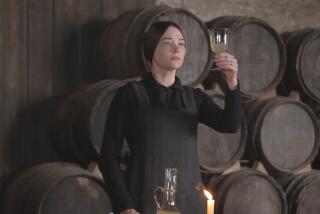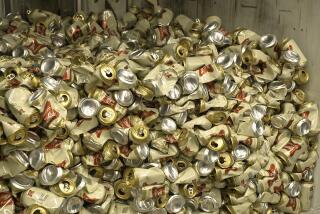170-year-old shipwrecked champagne much like bubbly today, study finds
- Share via
When divers salvaged 168 bottles of champagne from a shipwreck at the bottom of the Baltic Sea in 2010, taking a sip when they emerged from the surface, they knew immediately that they were probably tasting wine that was more than 100 years old.
But for scientists, the journey to understand what the bottles contained was just getting started. After nearly five years and batteries of chemical and taste tests, they’ve now revealed what they found: that 19th century champagne was a whole lot like the stuff we drink today.
“We were thinking the chemical composition of this wine would be very different from the composition of wines today,” said Philippe Jeandet, a professor at the University of Reims Champagne-Ardenne in France. “But that was wrong. We have found that the wines were very similar.”
Jeandet and colleagues from several institutions published the results of their analysis Monday in the journal Proceedings of the National Academy of Science. They compared the chemistry of three samples from the shipwrecked champagne, which is believed to have been produced around 1840 or 1841, with three samples of modern Veuve Clicquot from 1955, 1980 and 2011.
The team didn’t know much about the sunken ship, including where it sailed from, where it was headed or when it sank off the coast of Finland. That made figuring out the age and origin of the champagne, which had lost its labels, challenging at first. But later inspections of branded engravings on the corks revealed that the champagne came from the Veuve Cliquot Ponsardin, Heidsieck and Juglar (later known as Jacquesson) houses. Resting on the bottom of the ocean provided perfect storage conditions: total darkness and a temperature about 2 to 4 degrees celsius (36 to 39 degrees Fahrenheit).
The chemical differences the scientists found between the old and young champagnes pointed toward changes in the winemaking process - and in champagne drinkers’ tastes - over the last two centuries.
High levels of iron in the champagne may point to the use of metal vessels during winemaking, the team reported, while elevated copper levels may indicate that grapevines of the era were treated with copper sulfate as a fungicide. The old champagne had a lower alcohol content than modern bubbly - perhaps the result of dilution of the wine with grape syrup to sweeten it, or perhaps the result of 19th century Europe’s cooler climate. Grapes maturing at lower temperatures would have a lower sugar content, resulting in less alcohol production during fermentation.
The finished, bottled product fished out of the Baltic had a much higher sugar content than today’s wine: about 150 grams per liter, versus the 6-8 grams per liter in modern brut. That’s very sweet (a 12-ounce serving of Coca-Cola has 39 grams of sugar, the equivalent of nearly 110 grams per liter), but it reflects the tastes of European wine drinkers of the day, who liked their champagne very sweet, Jeandet said.
The sugar content also provided a clue that the shipwrecked bottles were probably on their way to Germany or Finland and not to Russia, where Veuve Cliquot sold a beverage known as Champagne à la Russe that had super-high sugar levels about 300 grams per liter.
The scientists’ report also included more subjective measures of the wine. In tastings conducted in 2012, they wrote, testers at first detected flavors described as “animal notes,” “wet hair” and “cheesy” - describing the champagne’s aromas as grilled, spicy or smoky with fruity and floral notes after swirling it around in a glass and allowing it to open up. Lab analysis revealed the presence of chemicals known to create such flavors in modern wines.
Jeandet’s team received only 2 milliliters per variety of shipwrecked champagne for its investigations - and he did not get to participate in the tasting sessions. But the scientist, whose previous work has explored the physics of champagne’s bubbles and the mechanisms of its foaming, did eventually get a chance to try the beverage.
During a 2013 visit to the University of Munchen in Germany, a colleague offered Jeandet a 100 microliter sample. The sip was too tiny to put in a glass, so he had to taste it off the surface of his hand, where it had been squirted via syringe.
“The taste remained in my mouth three to four hours after tasting the wine,” Jeandet recalled Monday. “It was incredible, probably one of the best I have tasted in my life. But difficult to compare with wine I’ve tasted in the past. It was an unusual way to taste it.”
For more on science and health, follow me on Twitter: @LATerynbrown







